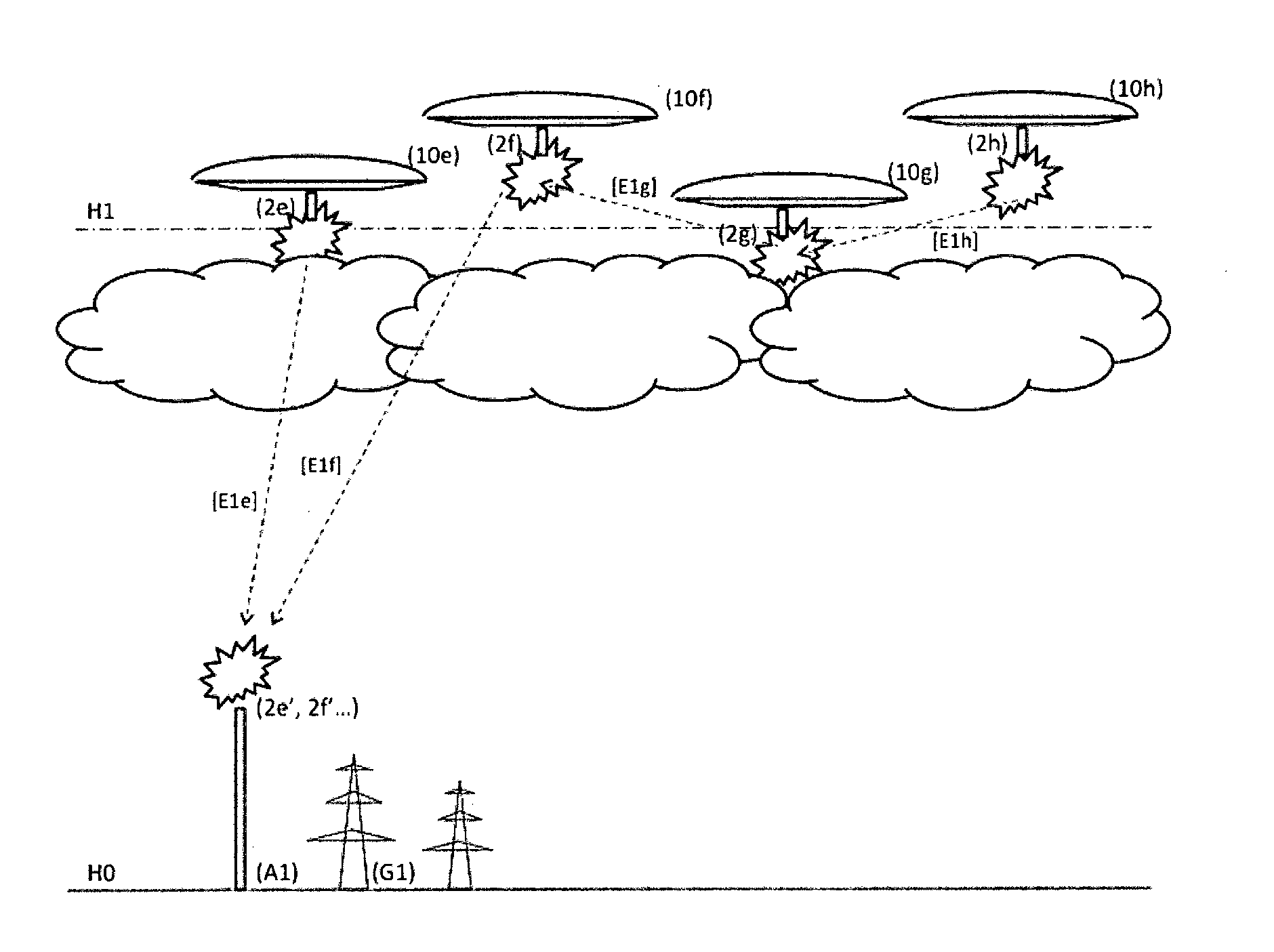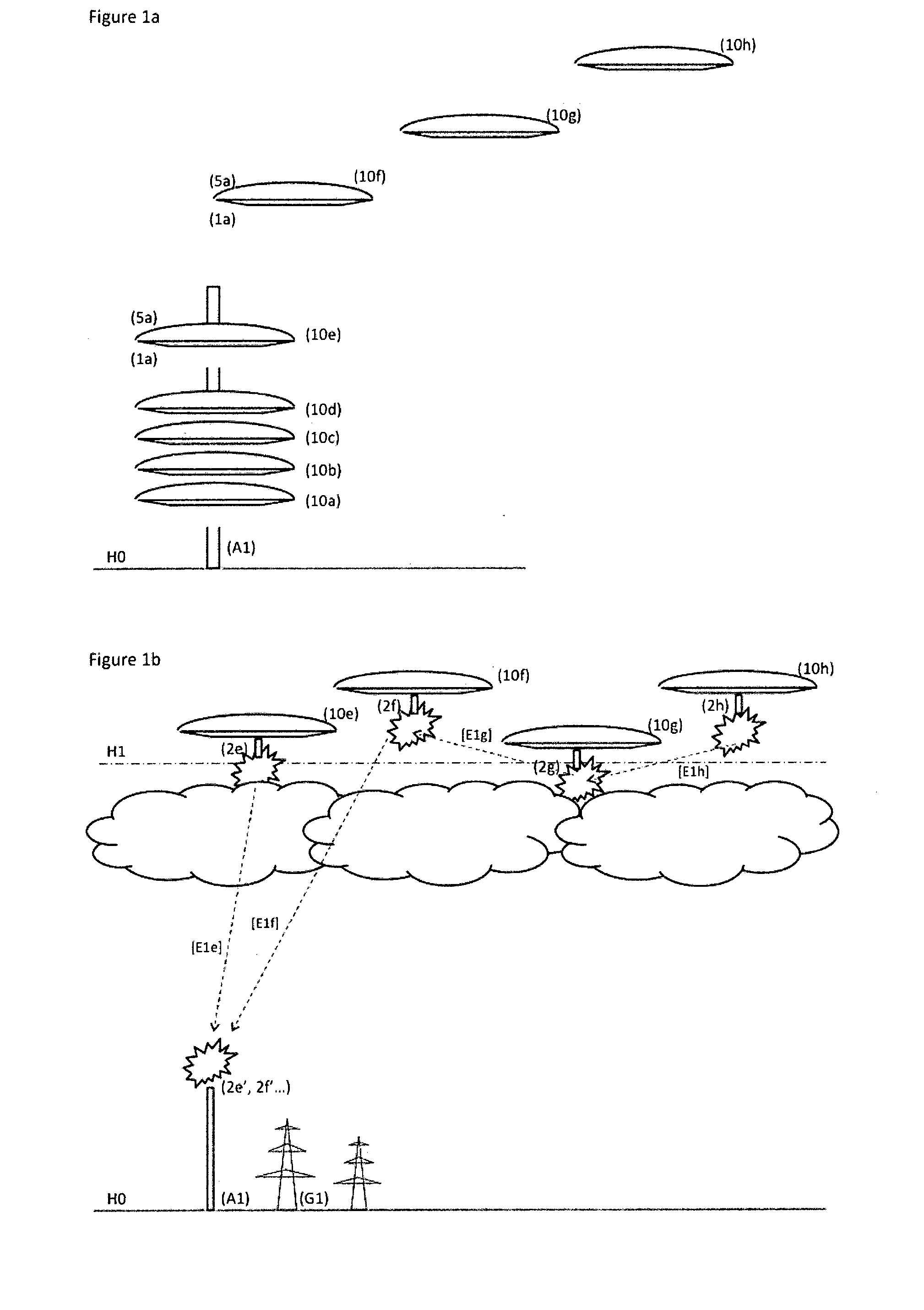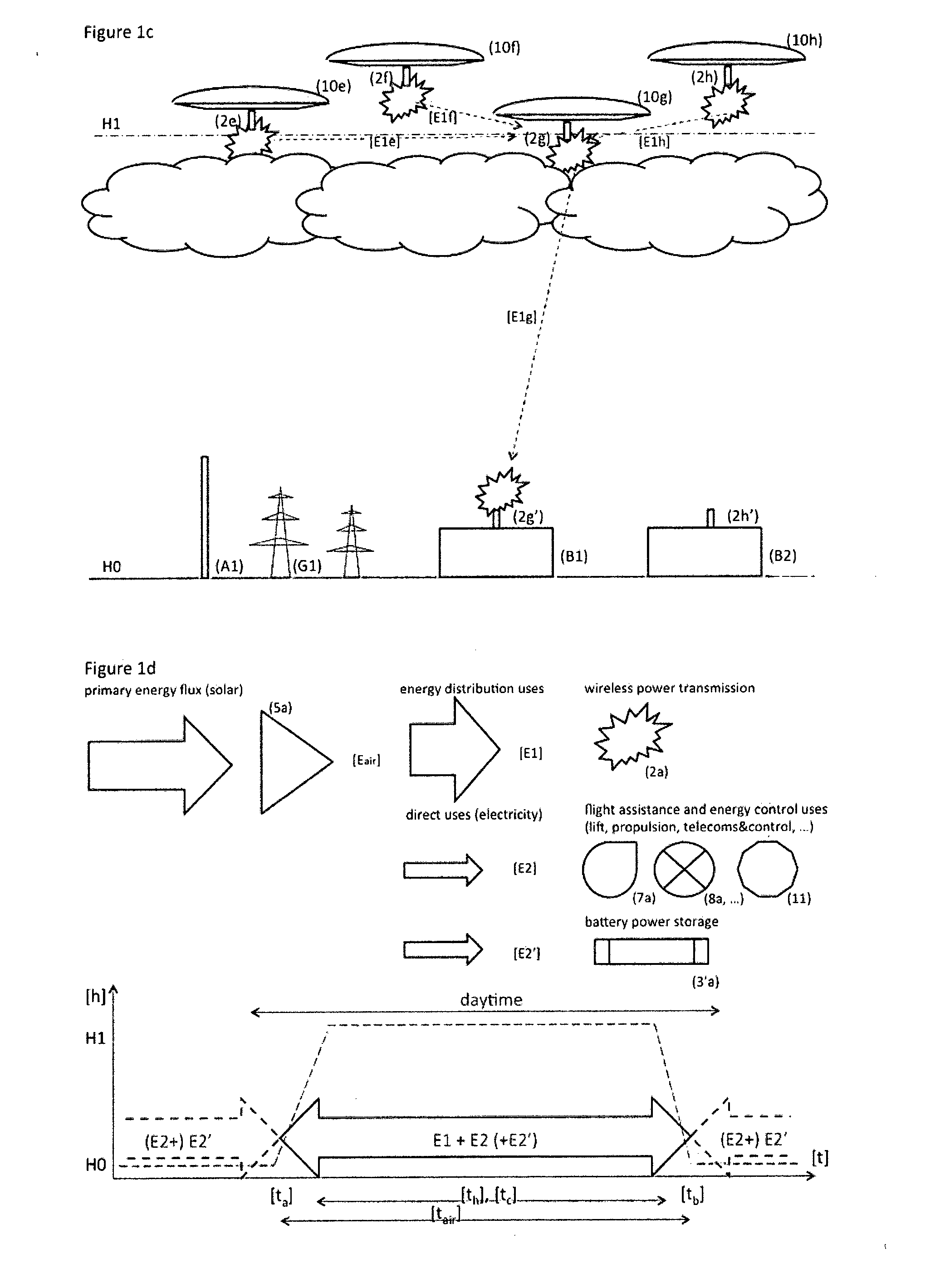Airborne energy generation and distribution
a technology for airborne energy and distribution, applied in the direction of photovoltaics, steam engine plants, motors, etc., can solve the problems of mobile energy users and respective locations, difficult to apply to demand-driven applications, and none of the solutions disclosed in the prior art solve the problem
- Summary
- Abstract
- Description
- Claims
- Application Information
AI Technical Summary
Benefits of technology
Problems solved by technology
Method used
Image
Examples
first embodiment
[0030]In this respect, said airships remain airborne for substantially long periods (th) mostly hovering above said destination altitude level, thereby carrying out multiple successive operations of energy generation and distribution of said energy (E1) to other airships, for the purpose of these storing energy in respective storage energy units, that continuously shuttle between the latter and respective platforms.
[0031]In another embodiment according to the invention, airships follow substantially vertical flight trajectories starting from an initial, for example ground level, thereby ascending and descending along preferentially narrow airspace volumes, at least until reaching a said altitude level, then hovering in preferentially substantially stationary geo-positions within a substantially narrow altitude range preferentially above said destination altitude level, or moving along preferentially pre-determined enclosed trajectories, preferentially within an imaginary airspace c...
second embodiment
[0084]FIGS. 2a: a process for airborne energy generation and distribution;
[0085]FIGS. 2b-2d: ground platforms for carrying out said second embodiment;
[0086]FIG. 2e: schematic diagrams of the key airborne energy processes and time evolution of basic operations of said second embodiment;
[0087]FIGS. 2f-2g: airships for carrying out said second embodiment;
third embodiment
[0088]FIGS. 3a-3b: a process for airborne energy generation and distribution;
[0089]FIGS. 3c-3d: ground platform for carrying out said third embodiment;
[0090]FIG. 3e: airship for carrying out said third embodiment;
[0091]FIG. 3f: schematic diagram of combined airship energy storage and ballast means;
[0092]FIG. 3g: schematic diagrams of the key airborne energy processes and time evolution of basic operations of said third embodiment;
PUM
 Login to View More
Login to View More Abstract
Description
Claims
Application Information
 Login to View More
Login to View More - R&D
- Intellectual Property
- Life Sciences
- Materials
- Tech Scout
- Unparalleled Data Quality
- Higher Quality Content
- 60% Fewer Hallucinations
Browse by: Latest US Patents, China's latest patents, Technical Efficacy Thesaurus, Application Domain, Technology Topic, Popular Technical Reports.
© 2025 PatSnap. All rights reserved.Legal|Privacy policy|Modern Slavery Act Transparency Statement|Sitemap|About US| Contact US: help@patsnap.com



